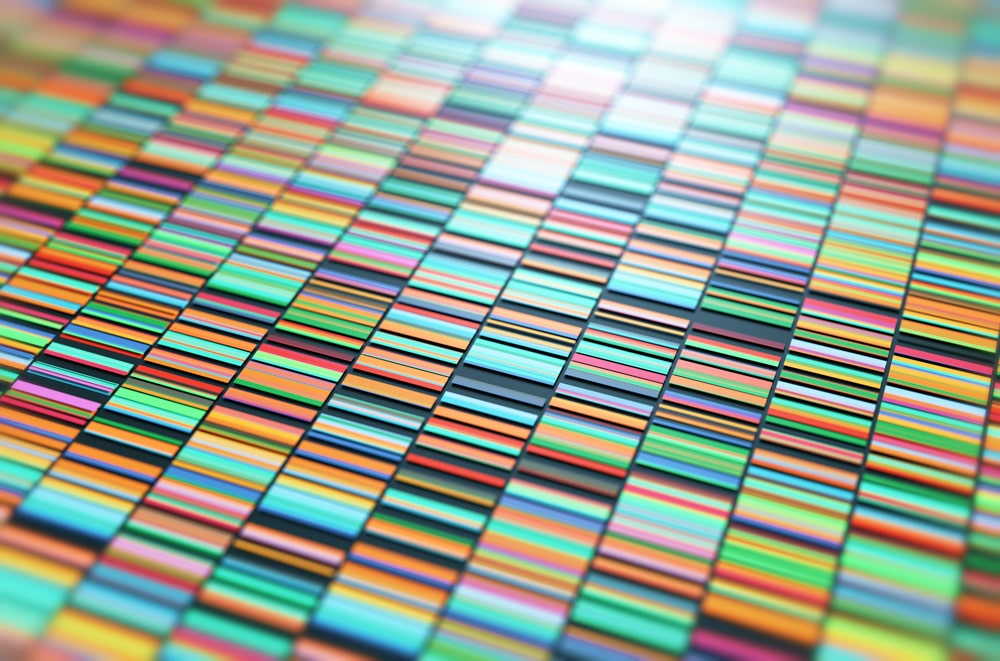Color Transmission Electron Microscopy

There are two types of electron microscopy—transmission electron microscopy (TEM) and scanning electron microscopy (SEM). SEM creates fascinating 2D images by bouncing electrons off the surface of the sample. I highly recommend searching for SEM samples on Google images.
There are a wide variety of applications for electron microscopy. While SEM images are aesthetically amazing, the TEM images bring us inside the world of the cell. TEM is a super-resolution imaging technique that produces a 2D image using electrons instead of photons. TEM works by shooting electrons through the sample, and its resolution is so fine it can image individual ribosomes.
How Does TEM Work? – Here Comes the Science Bit!
TEM gives us an excellent view into the ultrastructure of tiny features inside the cell. However, one of the limitations of TEM images is that they are black and white. This is because the detectors used in a TEM detect charge (as opposed to detecting light like in a regular microscope), so the signal that forms the image is binary and the image is produced in greyscale. Variation in the signal across the detector produces the features in the image (i.e., where the signal is strong, the image is bright; where the signal is weak, the image is dark).
To produce contrast and to highlight particular features, TEM images are often false colored using software such as PhotoShop or ImageJ. While these efforts can improve clarity in the image, the final result is a product of human interpretation. This makes it easy to miss tiny details and differences between samples. For a more comprehensive introduction on to electron microscopy, check out one of our previous articles on the topic.
The Emergence of Color Transmission Electron Microscopy
A research group headed by Ellisman and Tsian at the University of California, San Diego, has recently developed an exciting new technique, whereby TEM samples themselves can express color. The importance of this new technique is that it is the sample itself speaking. Instead of a person trying to pick out features, the features are standing out for themselves in brilliant color.
So, why is this exciting and how does it work? Well firstly, electron microscopy is cool. Everything is more interesting under an electron microscope and anything that makes that even MORE interesting is always welcome! Secondly, (and probably more importantly), this new technique gives us a clearer insight into the movement and position of objects inside the cell.
Sample Preparation for Color Transmission Electron Microscopy
In standard TEM, samples are dried and stained with osmium to produce grey-scale contrast and are cut to less than 100nm thick. The sample is placed on a grid made of copper, nickel or gold (metals that are non-reactive, that won’t throw electrons and distort the image). The sample is then placed in a vacuum and bombarded with electrons. As the electrons encounter the sample they either pass through it and land on a detector underneath the sample, or they are deflected and caught by detectors lining the tube. The pattern of how the electrons pass through or are deflected produces the image.
Osmium tetroxide (OsO4) is a popular stain for TEM—providing the characteristic black color and contrast within the sample. In the new color TEM technique, rare earth metals (lanthanides) are used to produce the different colors. Rare earth metals are not actually rare – they are just difficult to obtain in their pure forms as they are usually found in combination with each other.
Each of the lanthanide stains applied to the sample loses electrons at a different rate. This gives each of the stains a characteristic signal. Each unique lanthanide signal is detected and assigned a color. This is then presented as a color overlay on top of the black and white TEM image. This is much like the way that different fluorescent stains have different emission curves (different emission curves equal different colors).
Benefits of Color TEM:
- Enhanced visualization of the location of objects within the cell. This has been one of the limitations of TEM – smaller features can be difficult to distinguish, as can any overlapping features. Is the feature inside or outside of a membrane?
- It is possible to image sequential samples to show the movement of molecules in the cell.
- Correct representation of the sample. By reducing (and potentially removing) human interpretation, we remove bias and guesswork.
Possible Drawbacks of Color TEM:
- One possible issue could be the overlap of the electron signals, but this is something that we see in fluorescence when signals bleed into each other. You can overcome this through careful selection of stains and ensuring that the stains you use do not have similar emission curves.
- Signal-to-noise ratio could also be an issue but this is a standard imaging problem that you can address through good technique and sample preparation. There is always a trade off in electron microscopy between getting enough electron signal for high resolution while keeping noise to a minimum.
- As with all types of electron microscopic imaging, it is necessary to fix samples prior to imaging. This means that we are only able to capture a snapshot of the cells activity. If this imaging technique was applicable to live samples the results would be phenomenal!
As a microscopist, I find this technique very exciting. Using color TEM, we can access the cell at an entirely new level. Further optimization and exploration of color TEM will only deepen our understanding of the inner workings of the cell.
Do you use color TEM, or are you thinking about using it in your research? If, so we would love to hear your thoughts and ideas. Just get in touch with us by writing in the comments section!